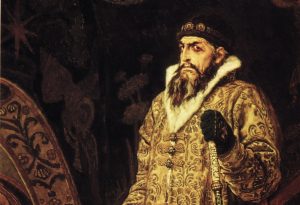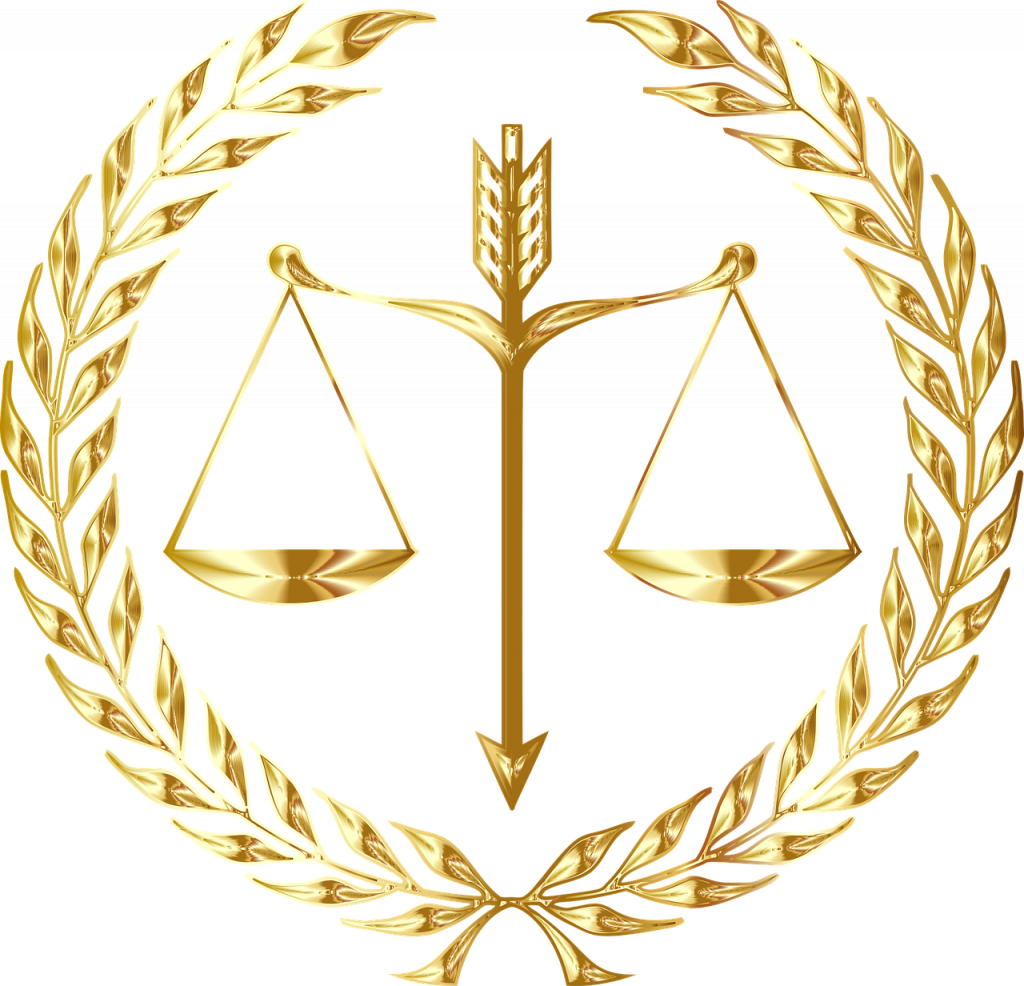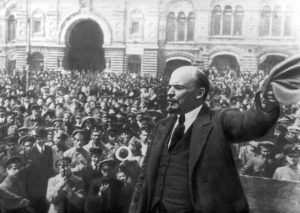 Every country honours its iconic personages, those seen to have served the nation particularly well. And the choice of icons is telling.
Every country honours its iconic personages, those seen to have served the nation particularly well. And the choice of icons is telling.
The English erect statues to Nelson. The French, to Louis XIV. The Italians, to Garibaldi. Acting in the same spirit, Putin’s government has just unveiled a statue to Ivan the Terrible. That’s like HMG honouring Jack the Ripper (this Repin painting shows Putin’s idol killing his son).
Vlad obviously traces his geopolitical and spiritual lineage back to the bellicose “gatherer of Russian lands”, as did Putin’s role model Stalin. Yet even Stalin never went so far as to commission a statue to the crazed monster.
Though later known for rabid attacks on Russia’s neighbours, Ivan began his reign by declaring war on his own people: “From time immemorial, the Russian people [wanted] to wipe out our whole dynasty…” To preempt that calamity, the first Russian tsar launched a punitive campaign against Russians.
Before he struck, Ivan had presciently tried to secure a fall-back position. To that end he sent his shaggy-bearded emissaries to Queen Elizabeth of England to propose marriage or, barring that, a mutual guarantee of haven if their respective subjects rebelled.
Her putative virginity must have been a factor in Ivan’s proposal, for he prized chastity in his brides. In fact, when on their wedding night his fifth wife turned out to be not quite virginal, Ivan had her drowned in a pond, as one did.
Elizabeth wasn’t so much reluctant to accept the proposal as perplexed: she had only a vague idea of Ivan or indeed Tartary, as contemporaneous English maps identified Russia. Hence she didn’t let Ivan’s wooing succeed where Leicester’s had failed.
Undeterred by amorous rejection, Ivan pressed on with his campaign regardless. To begin with, he created the first institutional organ of oppression in Russia: oprichnina, the somewhat more liberal precursor of Putin’s own KGB.
The oprichniks ransacked the land, torturing and murdering anyone who offended against the tsar’s ‘word and deed.’ In fact, those became the magic words that opened the doors of oprichnina barracks to any grass willing to denounce anyone he wished.
Those denounced would be first tortured and then, with few exceptions, cut to pieces or broken on the wheel – this even if their crime was only to have uttered a sentence beginning with “If I were tsar…” The just punishment would ensue inexorably even if the sentence then said “…I’d be even tougher on treason.”
However, the oprichniks were more even-handed than the KGB: they tortured not only the accused but also the accuser, to make sure he hadn’t borne false witness – biblical commandments had to be enforced.
Ivan, incidentally, was a pious man who knew the Scripture by heart. Nevertheless he murdered priests wholesale and practised rituals that openly mocked Christianity.
For example, Ivan set up a sham monastery for his cronies, in which they impersonated monks and he the abbot. There they alternated religious rituals with massacres, tortures of prisoners and orgies (the tsar boasted of having raped a thousand girls, many of whom he then killed in a fit of post-coital aggression).
The new statue appropriately shows Ivan raising the Orthodox cross – by serving as an extension of Putin’s (and before him Soviet) oprichnina, the hierarchy of today’s Russian church lives off Ivan’s blasphemous legacy.
Ivan also had a heightened aesthetic sense. He especially enjoyed the spectacle of his victims being sautéed in oil, to which end giant frying pans were erected in Red Square. As people were being evenly browned on all sides, the tsar would laugh and applaud whenever the executioners displayed more than average creativity.
Having thus hardened himself, Ivan opened large-scale hostilities. First he struck out in a north-westerly direction, systematically sacking every Russian town in his path.
The oprichniks murdered all prominent citizens, robbed everyone else and, as a final touch later duplicated by Lenin and Stalin, either confiscated or destroyed all grain. This worked by delayed action: those spared the oprichniks’ axes would succumb to starvation during the winter.
After capturing Tver, the oprichniks first robbed and murdered all the clergy, including the bishop. Over the next two days they sacked every house, looting what appealed to them and burning everything else.
Finally, the oprichniks rampaged through the streets, murdering everyone they could seize, including women and children. This they replicated in their subsequent conquests: 1,500 people were massacred in Torzhok alone, and it was a small town.
In January 1570 Ivan captured Novgorod. That Hanseatic city with parliamentary traditions had always irritated Ivan, and finally he had had enough.
By way of a warm-up, all Novgorod monks were clubbed to death. Then Ivan summoned the city’s aristocracy and trading elite, accompanied by their wives and children. They were all tortured ‘unimaginably’, as a contemporary described it.
Many were burnt with a chemical compound personally developed by the talented tsar, who had an aptitude for science too. Those men who were still alive were then drowned in the Volkhov river, followed by their wives, tied to their babies and pushed under the ice.
Then Ivan had all food in the city destroyed, along with all grain silos, fowl and cattle. Consequently, on top of the 60,000 corpses already swelling the Volkhov, the denizens had to suffer horrendous famines. Cannibalism was rife. Corpses were dug out of their graves and devoured.
A true pioneer, Ivan can also be credited with one of the first Jewish pogroms in Russia. When in 1563 he captured Polotsk, he massacred all the Jews living there.
Countries are like people: whatever they learn in their youth stays with them for ever. Ivan’s lesson on government has since entered the nation’s viscera. Rather than trying to expunge it, Putin gleefully shows it’s there to stay.









Again the Russophobe stooge Alexander Boot chooses to call Ivan IV or better known to Russians as Ivan the Great by the Western name Ivan The Terrible. In an argument over how Ivan was conducting a military action Ivan hit his son with his scepter killing him.. This act was followed by remorse but the deed was done. Ivan IV defeated the Mongols and lifted the 300 year Mongol Yoke over Russia. This defeat led to expansion of Russian territory to the Pacific. Boot neglect history and assigns Ivan’s rage to Putin who is never driven by rage or hate like Alex Boot. .